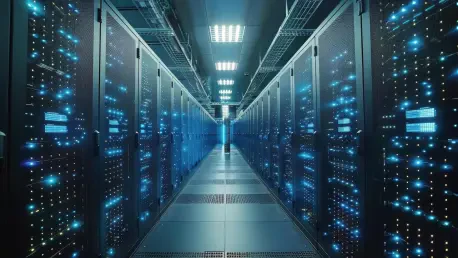The tech powerhouse, Microsoft, is ramping up its Azure data centers, aligning closely with its ambitions in the rapidly expanding field of generative AI. As the technological landscape evolves at an unprecedented pace, demand for generative AI capabilities accelerates, prompting significant investments from major players like Microsoft. Hyperscalers are now entrenched in an arms race, pouring billions into constructing server farms, acquiring advanced networking hardware, and securing energy resources critical for effectively managing large AI models. By forging a strategic partnership with OpenAI, Microsoft is fortifying its position at the forefront of the AI evolution. The company is strategically channeling extensive funds into establishing new data centers while enhancing existing facilities to accommodate the burgeoning needs of modern AI workloads. Executive Vice President Scott Guthrie emphasized that AI lies at the heart of Microsoft’s conversations with its clients, marking data centers as crucial components of this transformation. This shift reflects a significant rise in the company’s capital expenditures, reinforcing the sustained elevated spending necessary to maintain Azure’s strong competitive edge in the market.
Strategic Partnerships and AI Infrastructure
Microsoft’s efforts to support its AI capabilities are underscored by a focus on building facilities specifically designed for running advanced AI chips that demand immense compute power and energy. This has led the company to explore partnerships with utility providers and renewable energy companies, including experiments in harnessing nuclear power. These partnerships are essential for Microsoft to meet its ambitious sustainability goals and ensure a consistent electrical supply to support its voracious energy demands. Analysts have identified a trillion-dollar opportunity within the AI field. This staggering potential is prompting Microsoft to swiftly introduce new features while concurrently ensuring the reliability of its cloud offerings. Central to this endeavor are Microsoft’s collaborations with OpenAI and its enterprise clients, which are pivotal in recognizing infrastructure demands and implementing effective solutions to meet the same. By rapidly expanding its capabilities, Microsoft distinguishes Azure as the platform capable of enticing enterprise clients to execute their mission-critical AI projects efficiently.
Challenges and Opportunities Amid Rapid Expansion
Despite the rapid expansion of Azure’s capabilities to embrace AI solutions, challenges are becoming increasingly apparent. Semiconductors, critical components for AI-driven operations, face potential supply bottlenecks, necessitating intricate grid-level planning. In tandem, economic uncertainties surrounding interest rates and construction costs present formidable challenges to future infrastructure investments. The pressure to innovate is further emphasized by emerging competition in the cloud landscape, with generative AI becoming an indispensable tool. This marks the onset of a new era in infrastructure development where competition will influence tech providers, utility companies, and corporate clients worldwide. According to Guthrie, the current investment cycle is unlike any before, as the technological advancements and infrastructure now being established will shape the coming decade for cloud computing and AI integration. The burgeoning need for AI-ready solutions across industries indicates a pivotal shift, as tech companies must swiftly adapt to remain relevant. The transformative nature of AI technology presents both opportunities and hurdles demanding careful strategy from stakeholders across the tech landscape.
Future Considerations and Outlook
Microsoft is intensifying its efforts in expanding Azure data centers, aligning with its plans in the rapidly growing field of generative AI. As technology evolves swiftly, the demand for generative AI heats up, driving huge investments from major companies like Microsoft. Hyperscalers are engaged in fierce competition, investing billions in building server farms, acquiring advanced networking equipment, and securing energy resources essential for managing large AI models. Microsoft’s strategic alliance with OpenAI secures its lead in AI advancement. The company is strategically allocating significant funds to develop new data centers and enhance existing ones to meet the demands of modern AI workloads. Scott Guthrie, Executive Vice President, highlighted that AI is central to Microsoft’s client engagements, making data centers vital to this change. This transformation signals a substantial boost in the company’s capital spending, reinforcing the ongoing investment needed to keep Azure’s strong competitive market presence.









